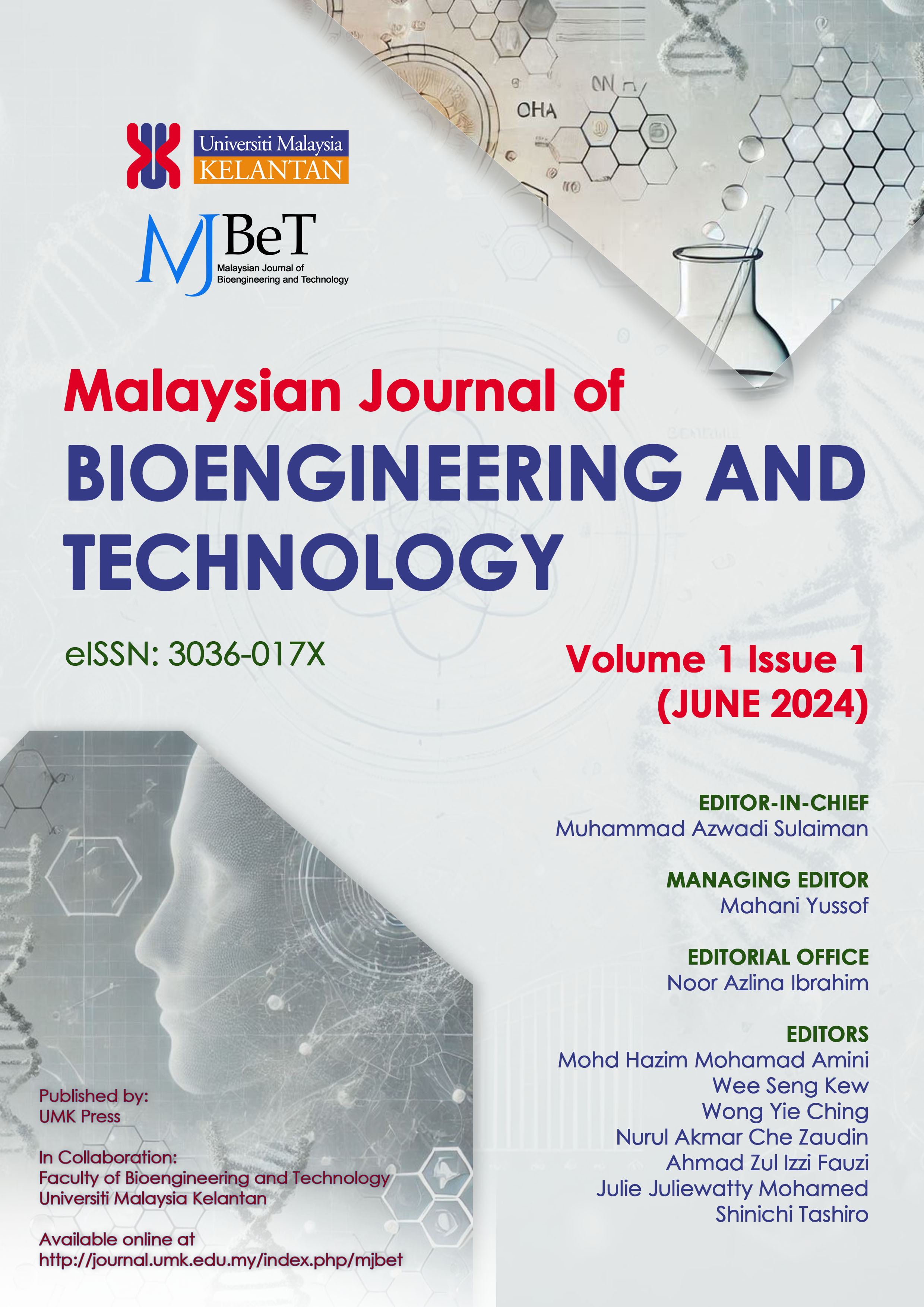Zn-Doped Calcium Copper Titanate Synthesis via Microwave-Assisted Technique
DOI:
https://doi.org/10.70464/mjbet.v1i1.1427Keywords:
Zn-doping, CCTO, Microwave-assisted technique, Dielectric propertiesAbstract
Electroceramic material has become significant in the recent development of electronic parts such as capacitors, resonators, and sensors. The previous study on calcium copper titanate (CaCu3Ti4O12, CCTO) showed that CCTO exhibits a colossal dielectric constant, up to 105 for bulk materials using a conventional synthesis route (calcine and sinter at 900 - 1040? for 9 - 12 hours). The high firing temperature and longer reaction time were undesirable because they would increase production costs and be time-consuming. Alternately, research findings on doping with donor or acceptor elements were proven to be an effective technique for improving dielectric properties. Thus, the Zn-doping (Zn= 0, 1, and 3 mol%) method increased the dielectric constant in CCTO. The study successfully synthesized Zn-doped CCTO at 700? with a soaking time of 40 minutes using a microwave-assisted technique (calcined and sintered). Then, the samples were characterized using XRD and an impedance analyzer. The CCTO crystal formation was examined through an XRD pattern, and semi-quantitative analysis indicated that 1 mol% of Zn-doped recorded optimum formation reaction after calcining (56.5 wt%) and as-sinter (70.3 wt%). However, despite the low formation of CCTO crystal structure in 3 mol% of Zn-doped (34.9 wt%), it has the highest dielectric constant, and the dielectric loss was reduced at high frequency.


